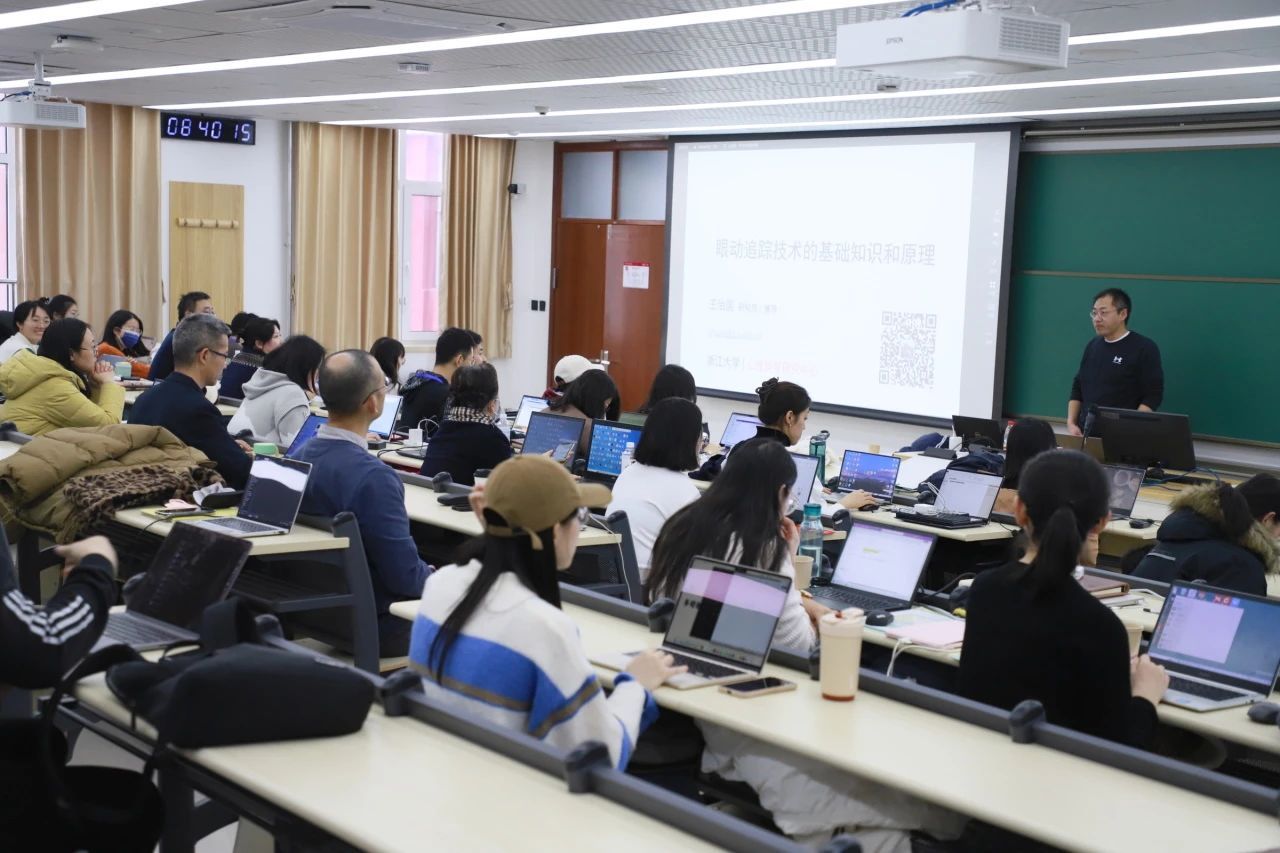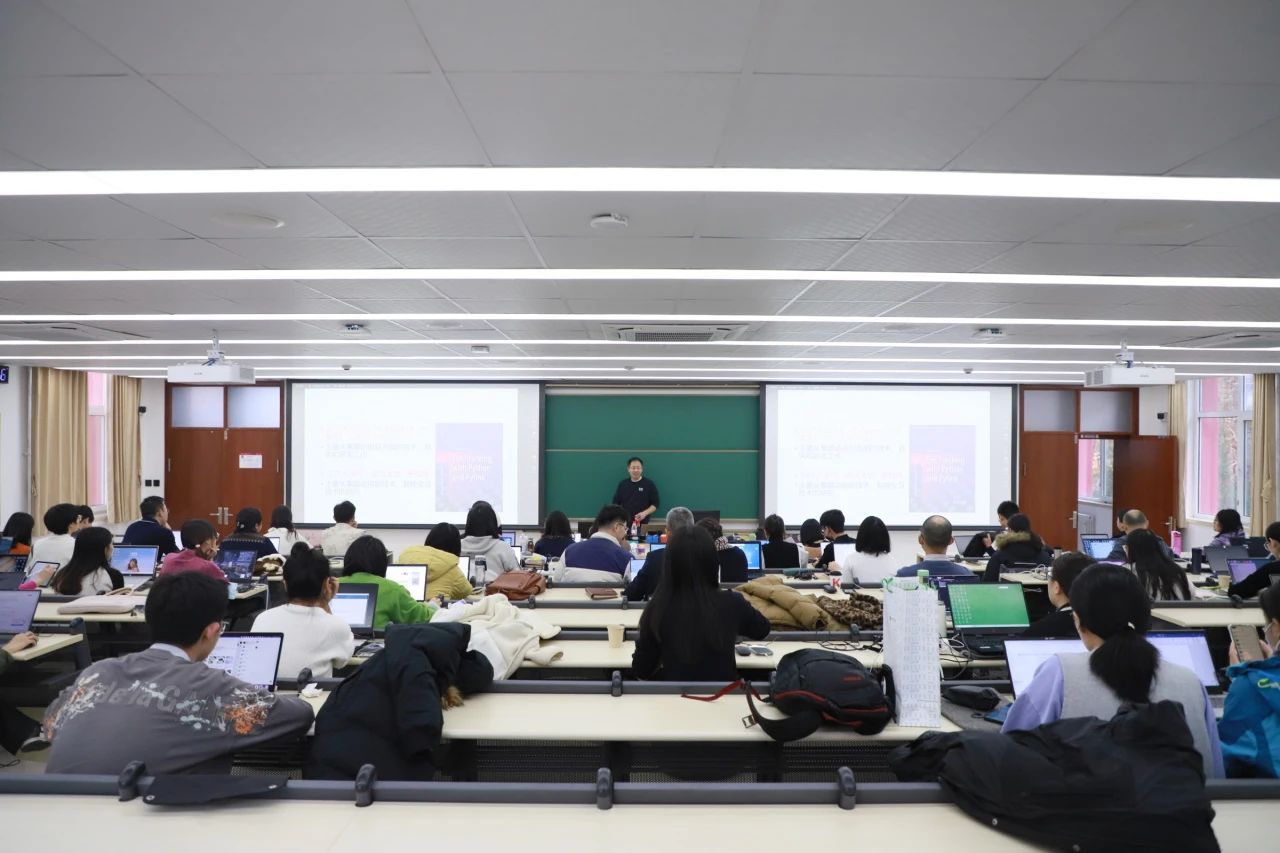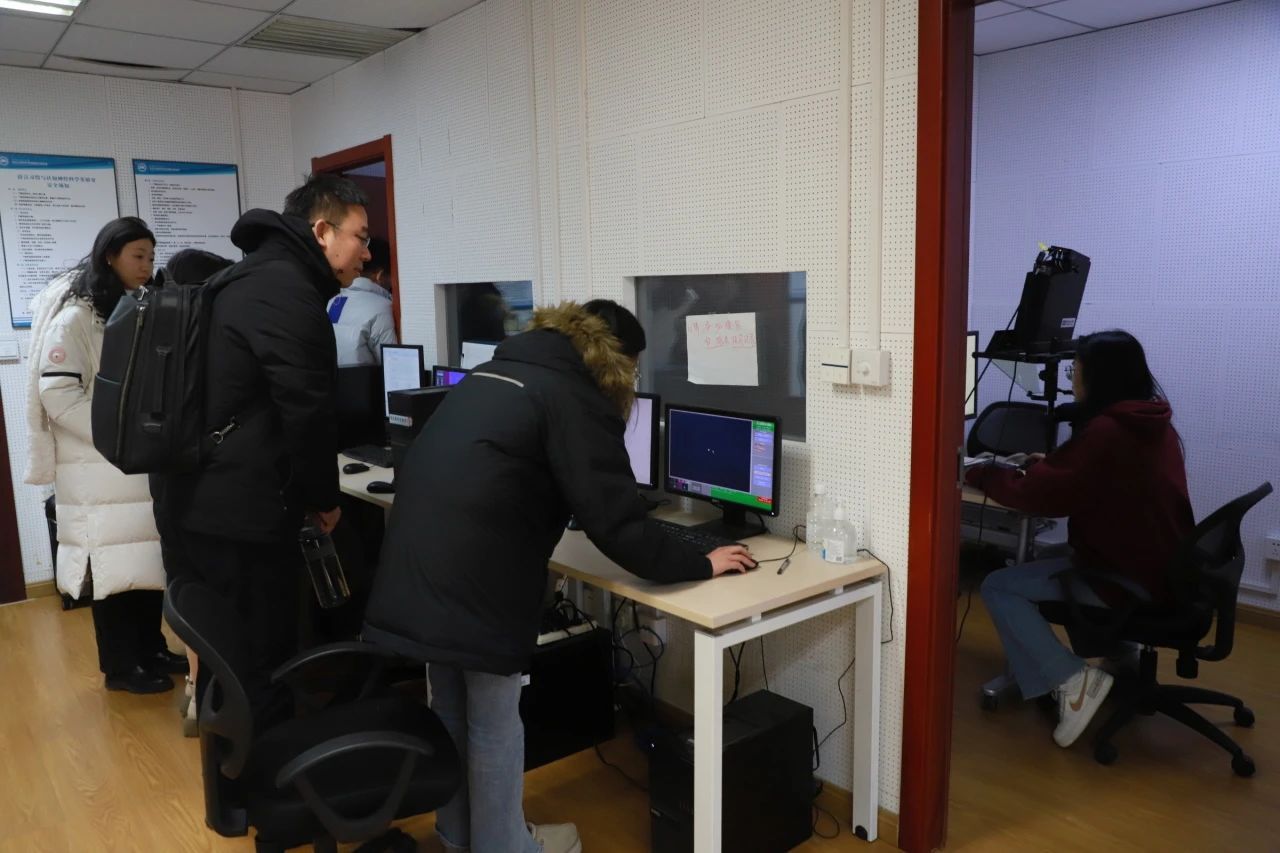November 26, 2023 was the second day of the technical training module of the "Bridging East and West:Cutting-Edge Perspectives in Language and Cognitive Science Forum|Eye-tracking Workshop on Language Cognitive Science". The keynote speaker taughttrainees how to collect and analyse eye movement data, guided students to program, and explained the core issues such as theexpanded applications of eye-tracking technology.
The technical training content on the 26th was divided into five parts:
In the first part, Researcher Wang Zhiguo from theCenter for Psychological Sciencesat Zhejiang Universitytaught traineeshow torecord eye-tracking signals and EEG datasynchronously. He explained the feasibility with literature as evidence, anddemonstrated how to use multiple terminals to collect eye-tracking and EEG signals through graphical methods. He also used software such as EEGLAB to demonstrate through actual operation how to analyze and process the collected signals to obtain target data.

In the second part, researcher Wang Zhiguo explained how to use Python programs to control eye-tracking instruments. He ran it on a simulated machineand intuitively demonstrated the convenience of using Python in controlling eye-tracking experimental programs.

In the third part, Doctor He Tao from Center for the Cognitive Science of Language at Beijing Language University taught basic knowledge of Python/Matlab software, introduced how to use them to write eye-tracking experimental programs and demonstrated how to connect EyeLink through matlab or python programming codeby twoprogramming examples.

In the fourth part, Associate Professor Zhan Likan from the School of Communication Science at Beijing Language and Culture University taught thevisual situation paradigm, which is a paradigm commonly used in the field of language cognitive science research using eye movement technology. Combining rich literature, Professor Zhan mainly introduced this paradigm’s specific connotation, application and data analysis methods. He also pointed out some problems with the paradigm and several directions for future in-depth research.

The fifth part was an on-site operation and Q&A session on the Eyelink eye-tracking instrument. All students were divided into four groups. Under the guidance of Dr. He Tao and others, they went to the eye-tracking laboratory at the Center for the Cognitive Science of Language to perform on-site operations. The students participated in the eye-tracking experiment by taking turns as either the experimenter or the subject and personally calibrating the instrument. Dr. He Tao provided detailed answers for the problems encountered by the students during the operation or in their previous research.

The "Bridging East and West:Cutting-Edge Perspectives in Language and Cognitive Science Forum|Eye-tracking Workshop" was successfully concluded. Vice Director Jiang Rong of Center for the Cognitive Science of Language gave a speech at the closing ceremony, thanking all the students who participated in the workshop. In the future, the Center will hold technical training for equipment such as EEG, fNIRS, and MRI. We sincerely invites teachers and students in the field of language and cognitive science to come to learn and exchange, and wishes all students success in future academic research and life.